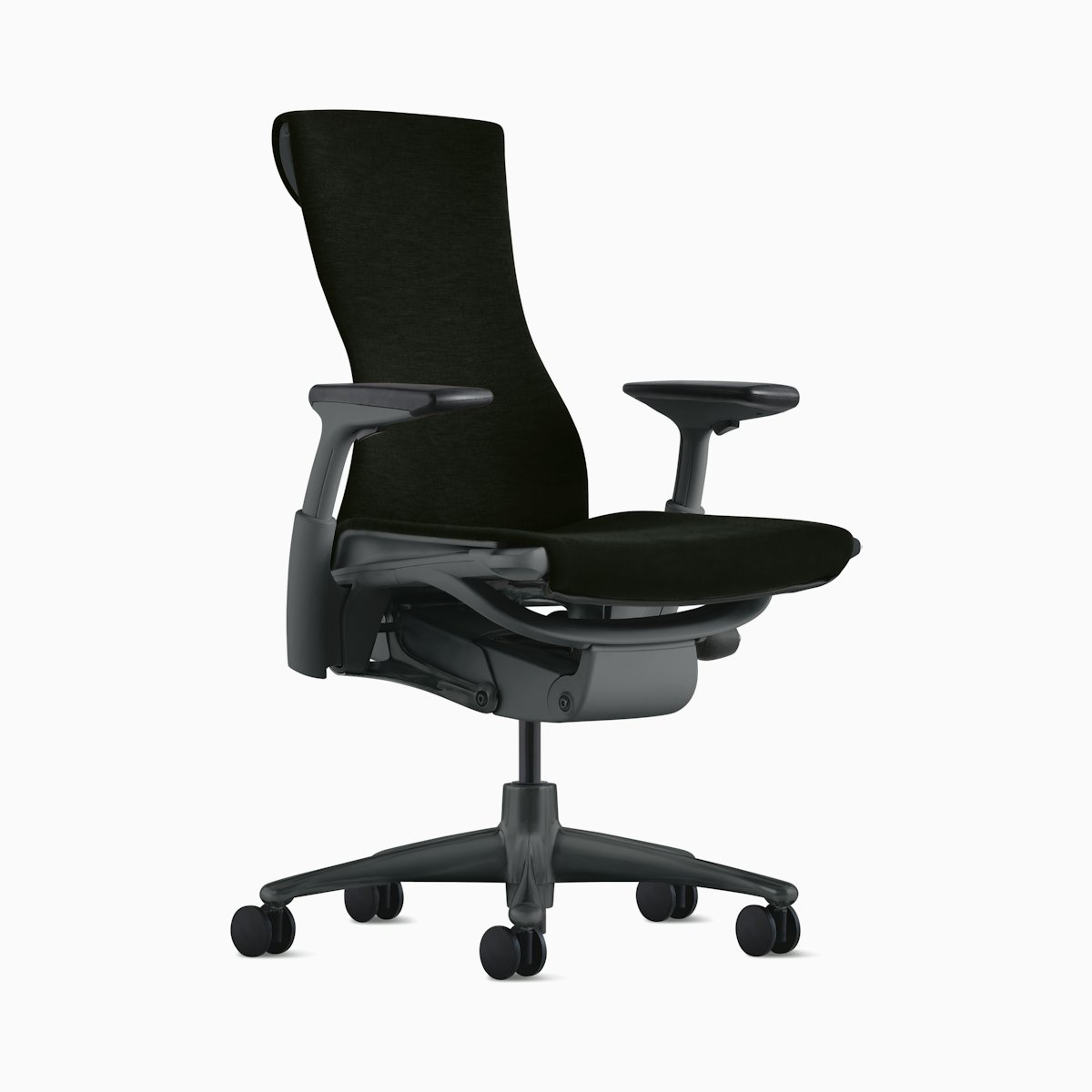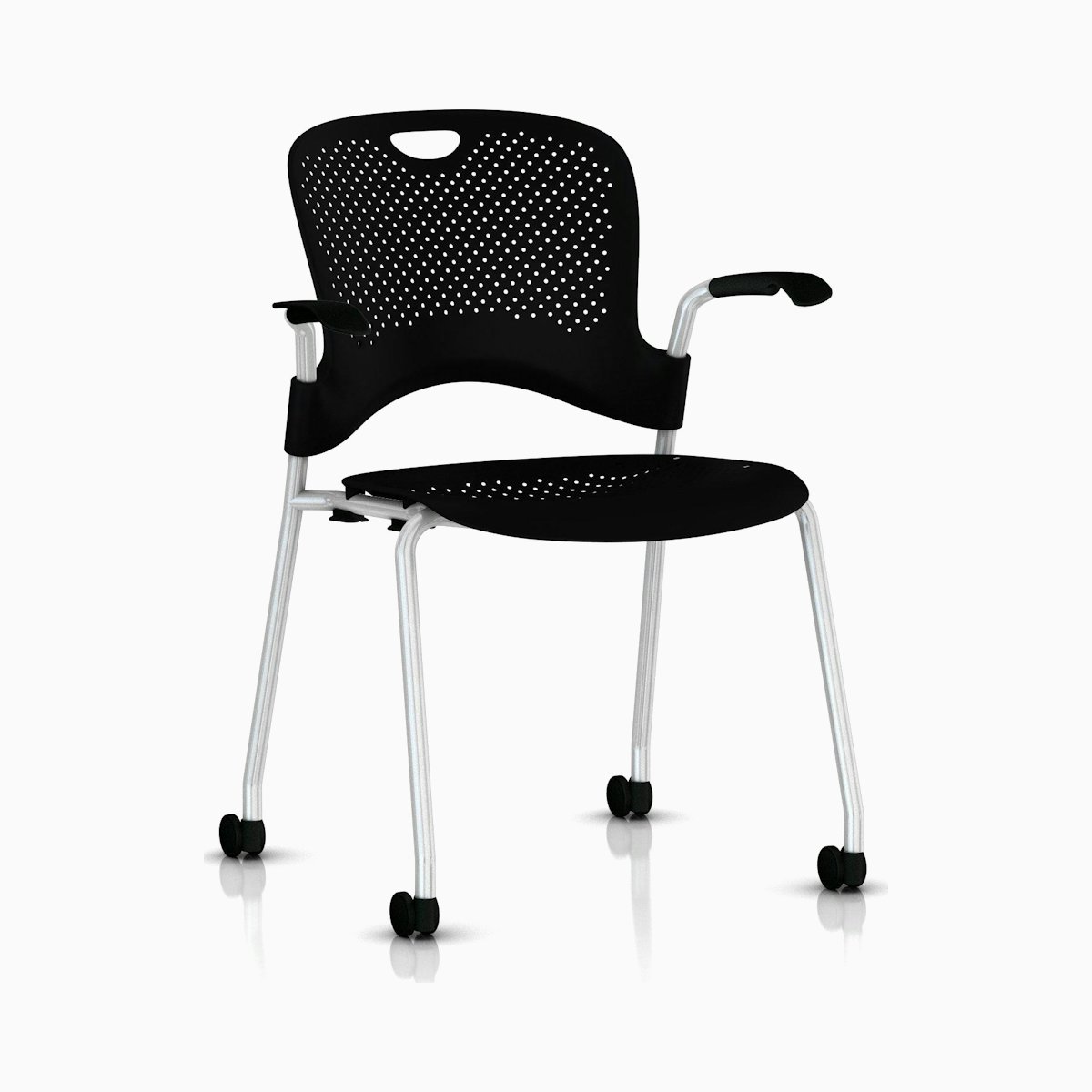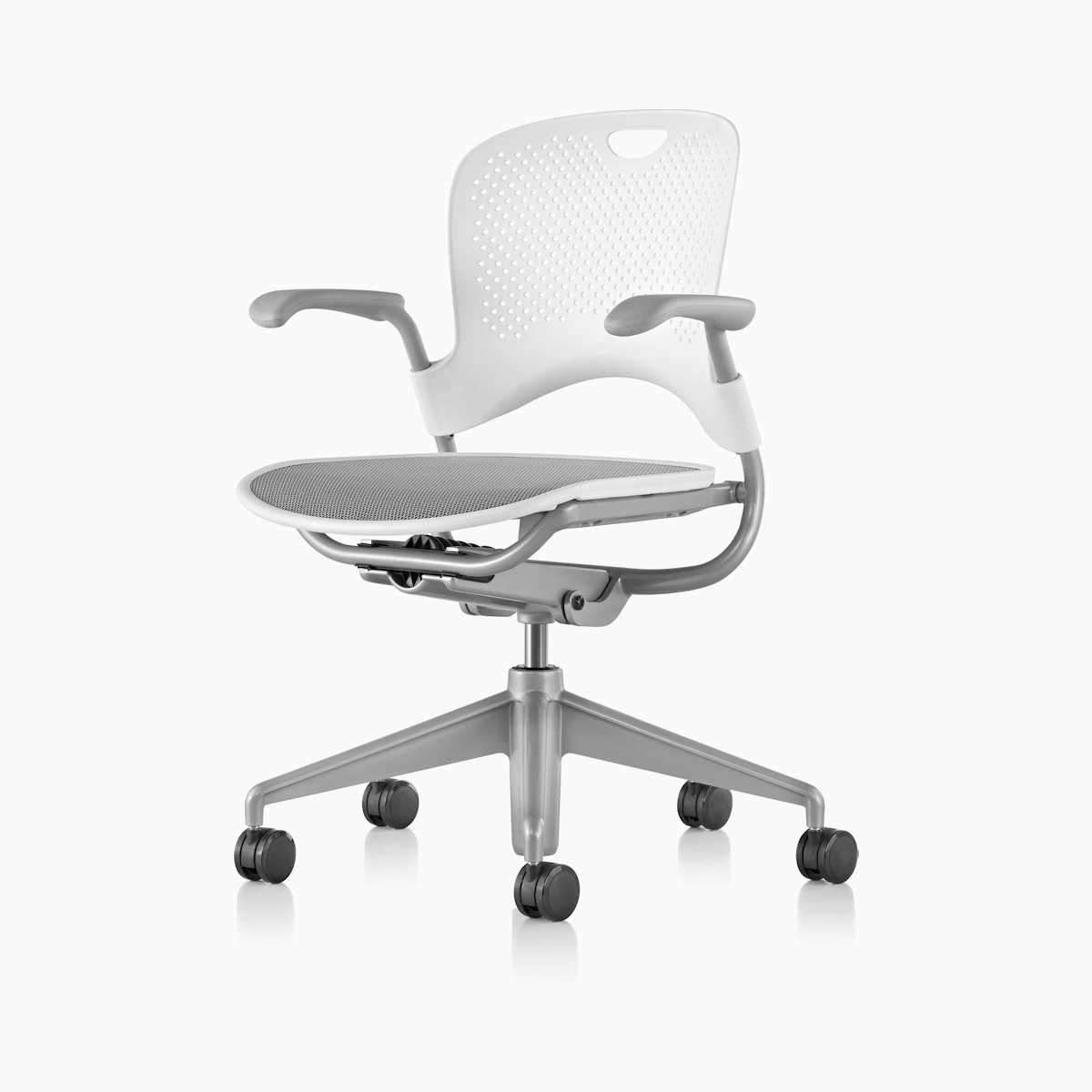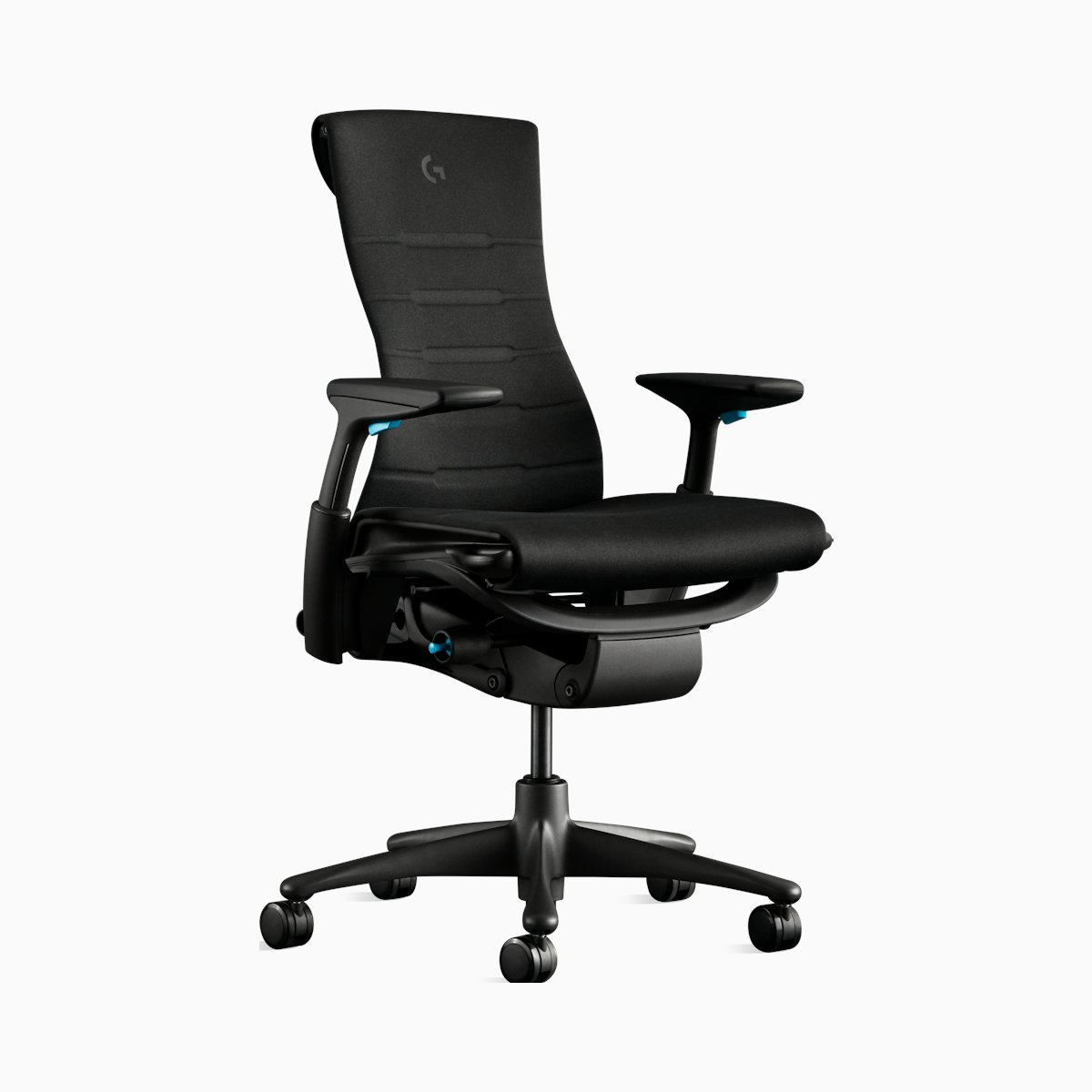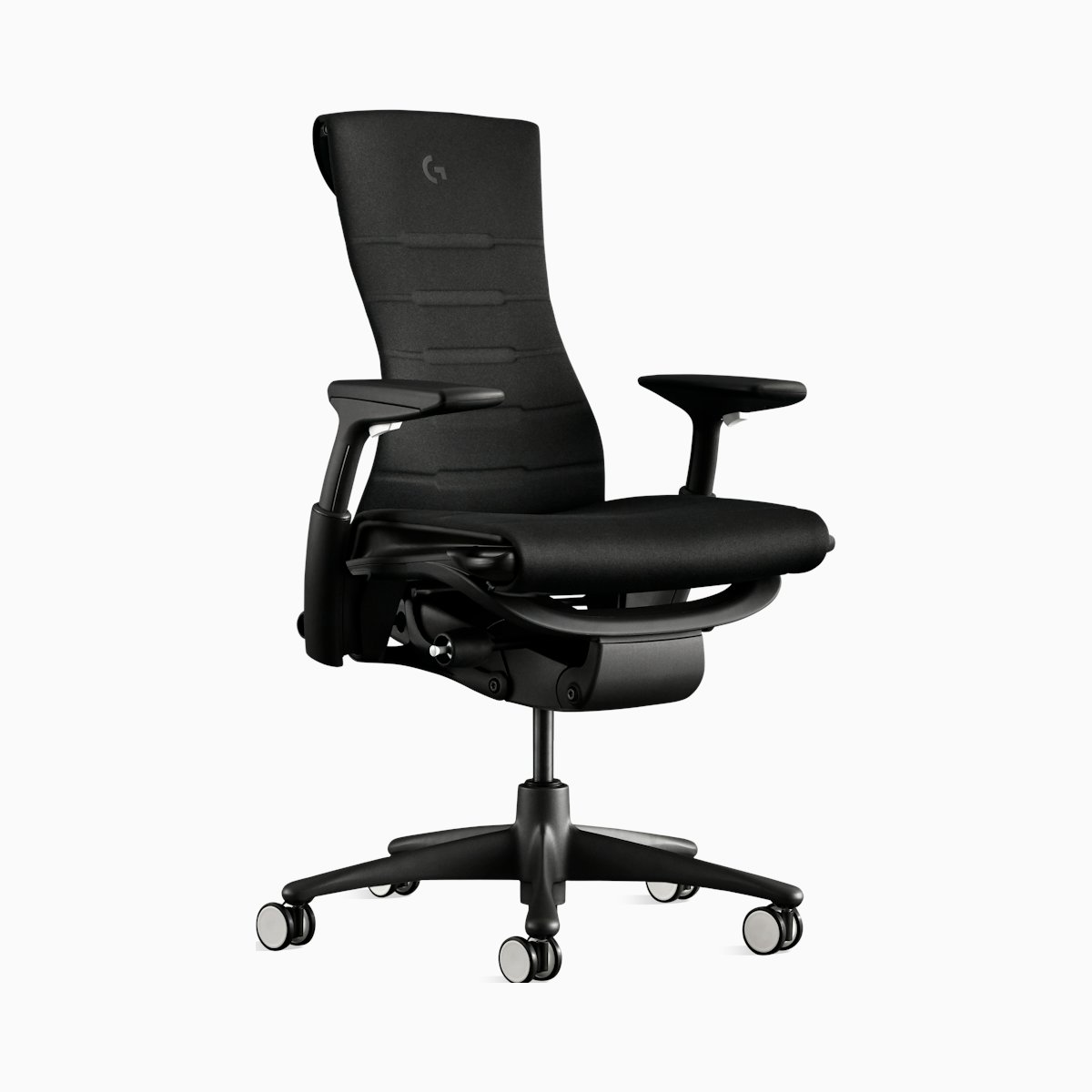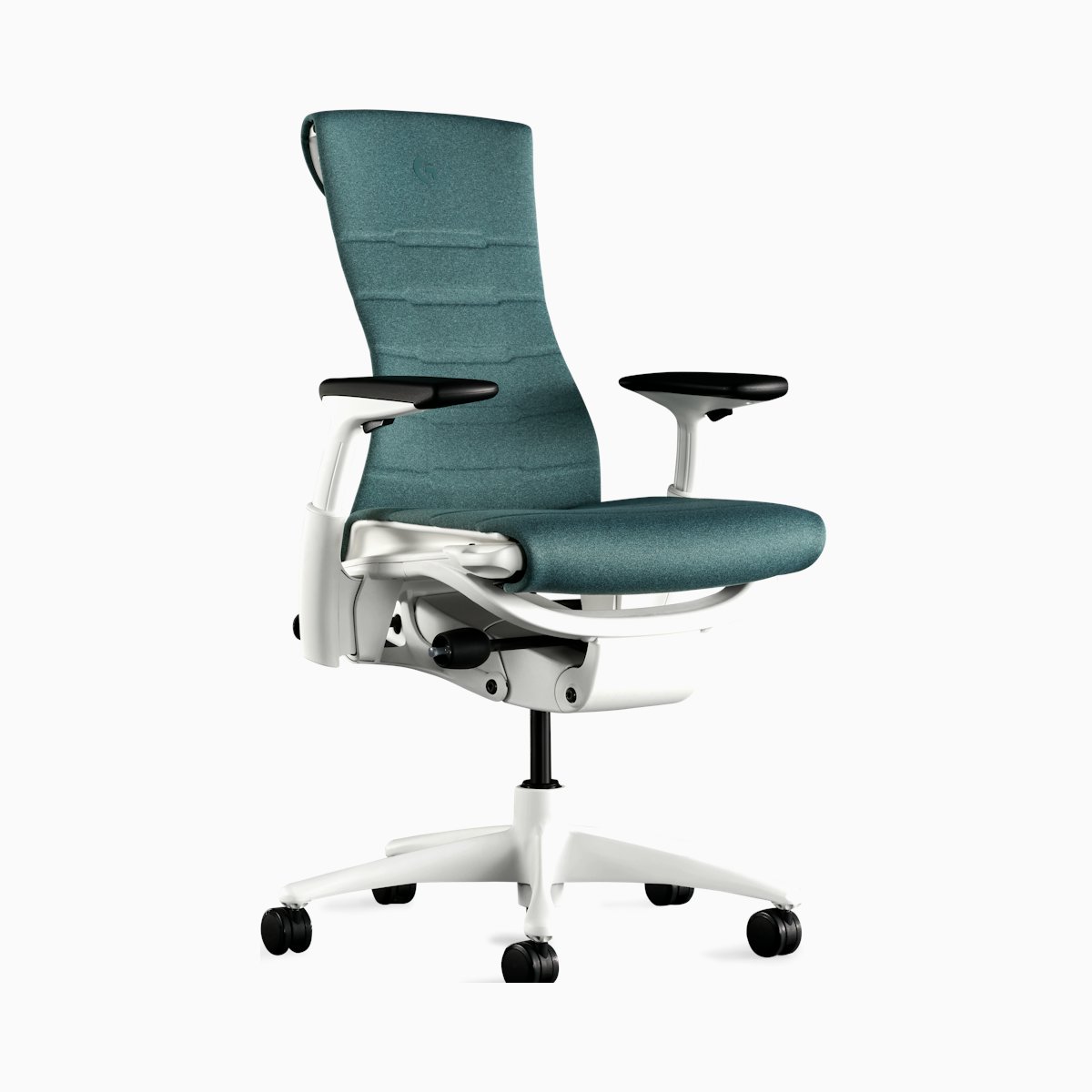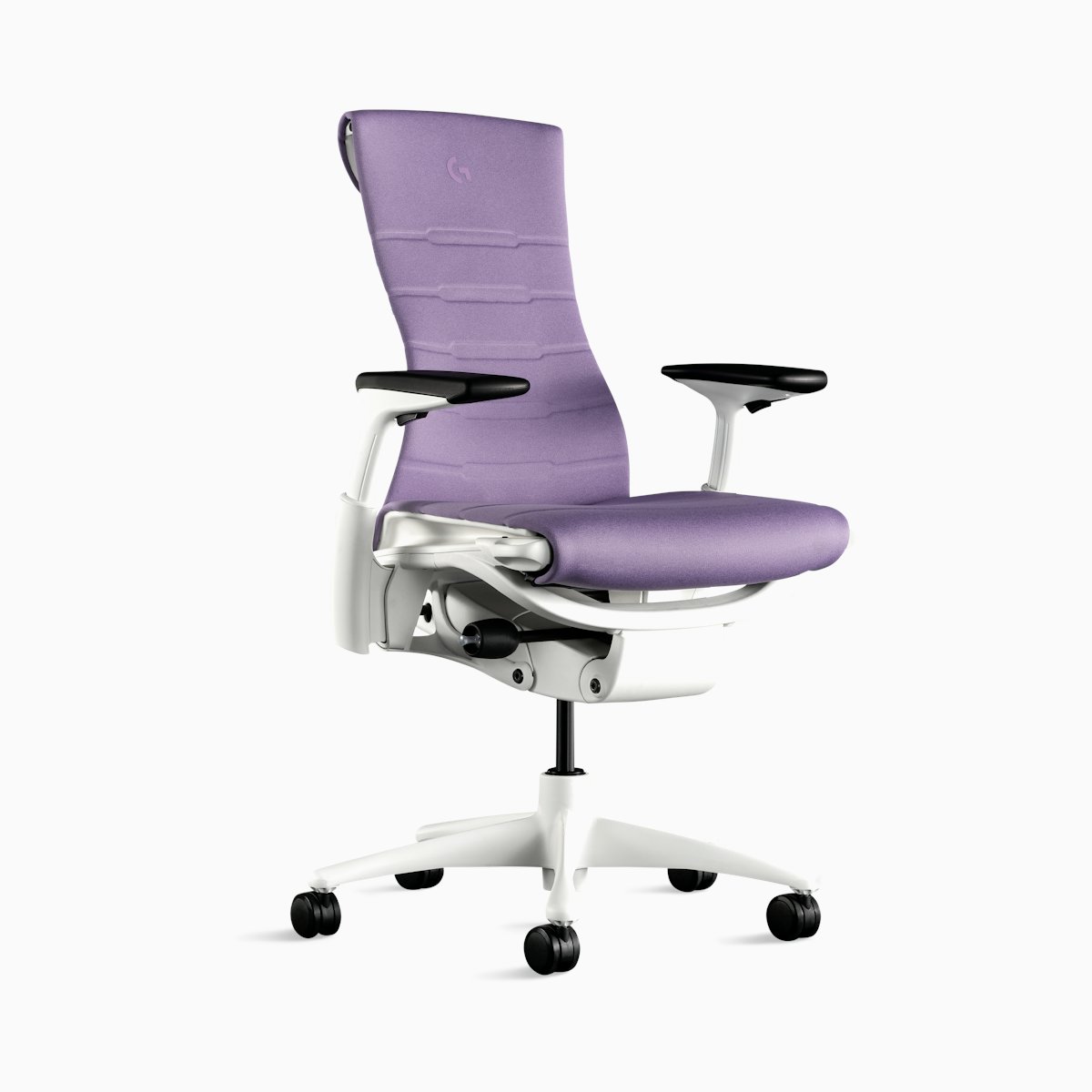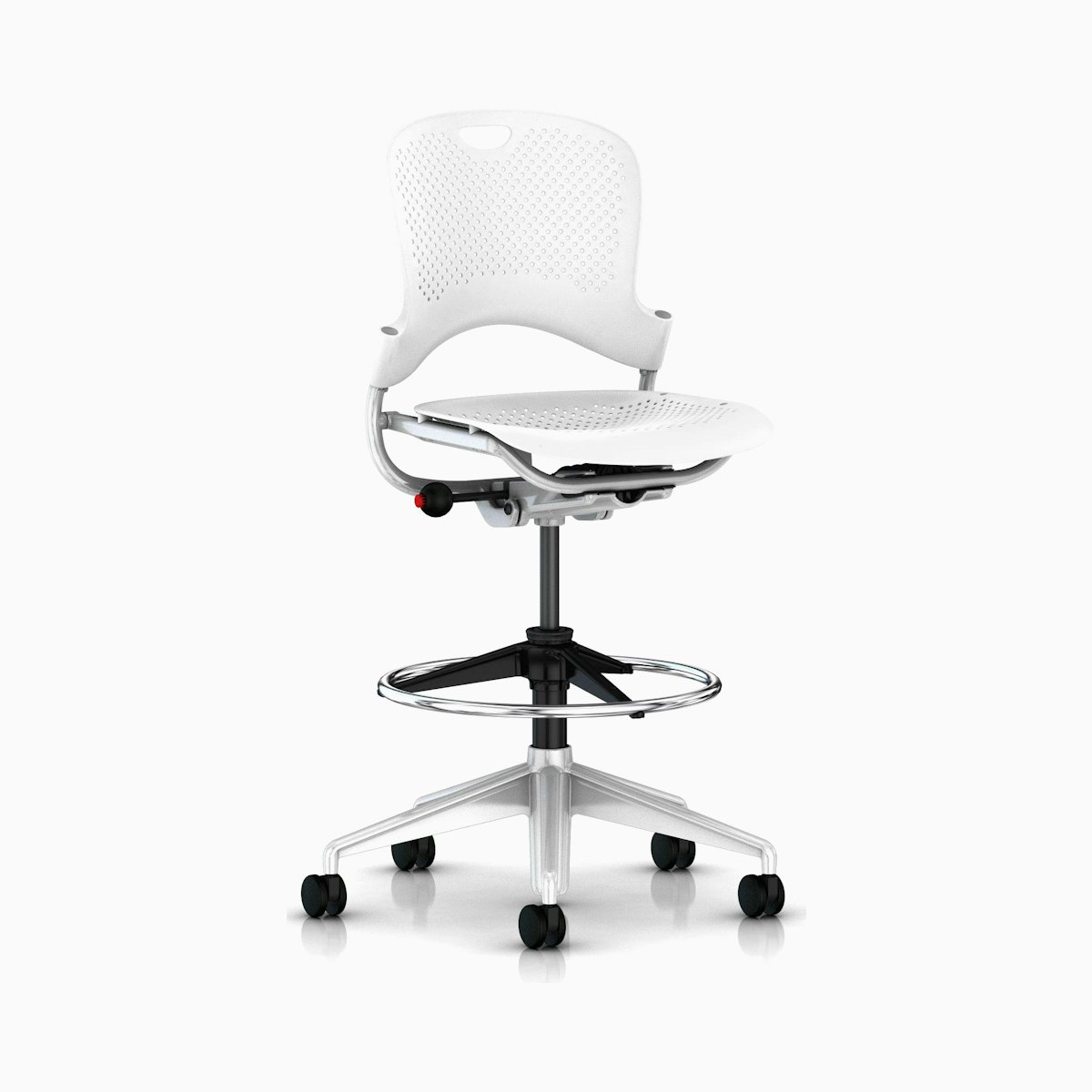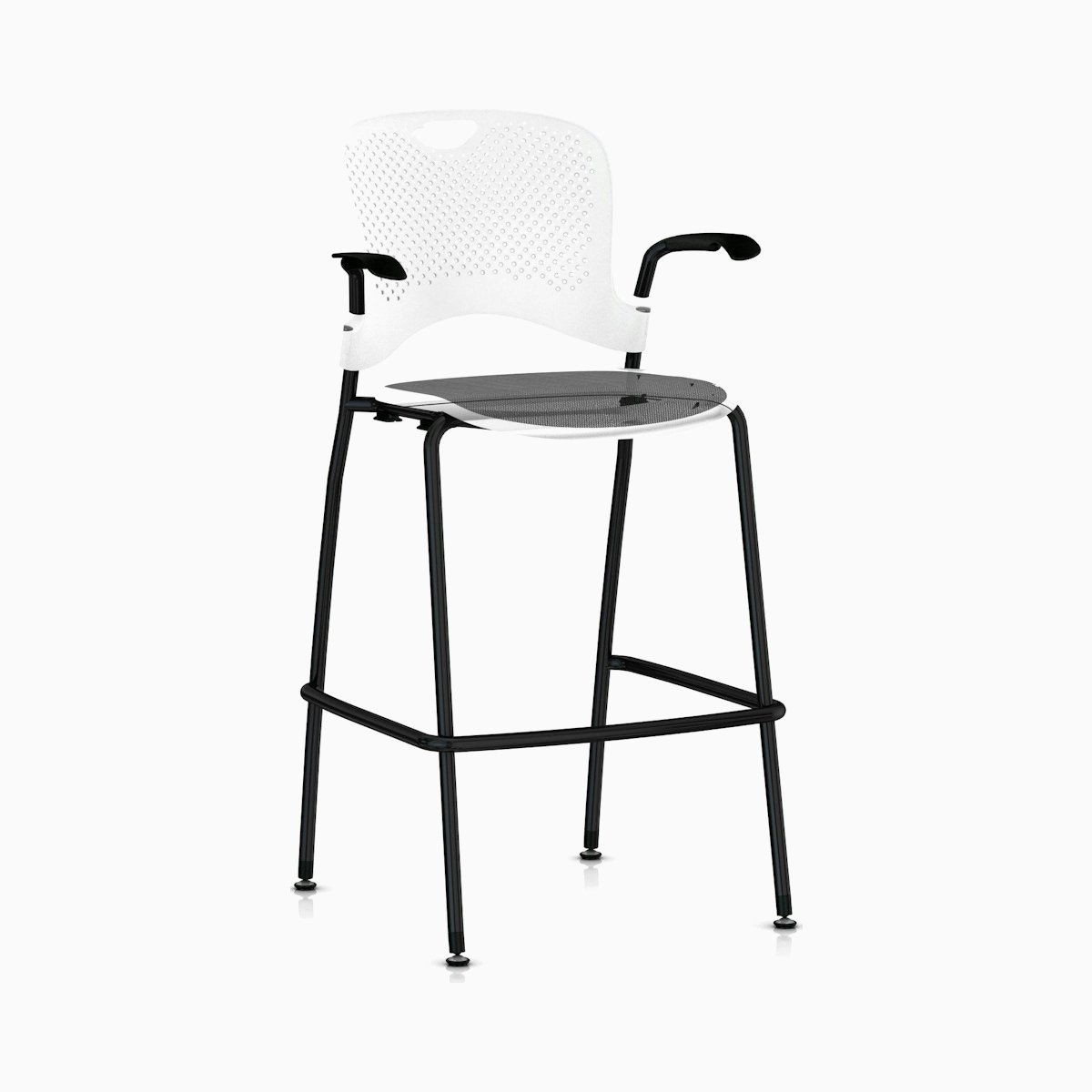Design With Empathy in Mind Jeff Weber strives to understand why certain objects help people thrive in their environments. He designs products for Herman Miller with the human body foremost in his mind. Most of all, he can put himself in another person’s shoes, and craft solutions that are as supportive as they are stylish.
Jeff Weber has always been fascinated by how things work—and driven to understand how they don’t work. “I was always tinkering,” he has said of his childhood years, “either building things or tearing them apart.” When Weber’s artist grandfather encouraged Jeff to consider a career in industrial design, he was hooked. Weber’s designs for office seating and healthcare have made the material world more ergonomic and—thanks to his ability to put himself in other people’s shoes—more empathetic.
Jeff Weber got his start as an apprentice to Bill Stumpf in 1989 as part of the team working on Herman Miller’s Aeron Chair. Weber absorbed Stumpf’s “uni-part theory,” which dictates that every element of an object must have a functional purpose and aesthetic value. This approach would become a hallmark of Jeff Weber furniture. They established Stumpf, Weber & Associates in 1999, introducing the Caper Stacking Chair that year. They began working on the Embody Office Chair with the goal of crafting a seat that would support every aspect of a body at work. It debuted in 2008, after Stumpf’s death. It was the second Jeff Weber office chair to win an award at NeoCon.
Weber has described designed objects as “the connective tissue between people and the world,” and sees the design of the body itself as a source of inspiration. After Stumpf died in 2006, Weber established Studio Weber & Associates in 2009. Weber’s next design challenge would be a personal one: after suffering a foot injury in 2006, he discovered that standard crutches were unwieldy and uncomfortable. Following his aphorism that “empathy makes good business,” he responded by approaching the problem from the perspective of “Jeff Weber, designer,” with the added wisdom of a recovering patient. He created Mobilegs, ergonomic walking aids that are affordable, stylish, and user-friendly.
Jeff Weber got his start as an apprentice to Bill Stumpf in 1989 as part of the team working on Herman Miller’s Aeron Chair. Weber absorbed Stumpf’s “uni-part theory,” which dictates that every element of an object must have a functional purpose and aesthetic value. This approach would become a hallmark of Jeff Weber furniture. They established Stumpf, Weber & Associates in 1999, introducing the Caper Stacking Chair that year. They began working on the Embody Office Chair with the goal of crafting a seat that would support every aspect of a body at work. It debuted in 2008, after Stumpf’s death. It was the second Jeff Weber office chair to win an award at NeoCon.
Weber has described designed objects as “the connective tissue between people and the world,” and sees the design of the body itself as a source of inspiration. After Stumpf died in 2006, Weber established Studio Weber & Associates in 2009. Weber’s next design challenge would be a personal one: after suffering a foot injury in 2006, he discovered that standard crutches were unwieldy and uncomfortable. Following his aphorism that “empathy makes good business,” he responded by approaching the problem from the perspective of “Jeff Weber, designer,” with the added wisdom of a recovering patient. He created Mobilegs, ergonomic walking aids that are affordable, stylish, and user-friendly.
9
Results
9
Results
View


